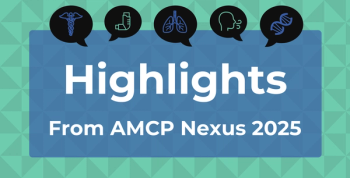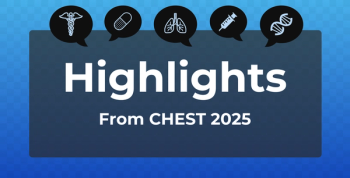
AML-Specific Early Mortality Risk Indices May Increase Accuracy of Care Quality Measurements
A study found acute myeloid leukemia (AML) salvage therapy was independently associated with early mortality compared with frontline therapy, suggesting that algorithms measuring quality of care should incorporate risk mortality indices that factor in disease characteristics and treatment status.
A study published in
“This is important because quality measure algorithms rank the quality of care in hospitals based on the early mortality associated with therapy,” the authors wrote. “These algorithms account for patient comorbidities, but may not include other important variables that determine the risk of early mortality, including the patient mix (percentage of patients with cancer; percentage of patients with leukemia or other liquid tumors) and the treatment status (salvage versus frontline cancer therapy).”
The study explored whether AML treatment status is an independently meaningful factor in early mortality after accounting for known adverse variables, with an aim of defining the impact of frontline vs salvage therapy status on early mortality.
A total of 4151 patients were included in the study, 2893 of whom had newly diagnosed AML and 1258 of whom were receiving salvage therapy. The independent adverse effects associated with 8-week mortality were assessed through univariate and multivariate analyses.
In the frontline therapy group, 8-week mortality was 13% vs 18% in the group receiving salvage therapy. At 4 weeks, the overall mortality was 6% in patients treated with frontline therapy and 7% in the salvage therapy group.
A host of independent factors were associated with 8-week mortality, including advanced age, AML related to therapy, a history of myelodysplastic syndrome, and poorer performance status. High white blood cell count, lower platelet count, higher peripheral blast percentage, lower albumin levels, and higher bilirubin, creatinine, and lactate dehydrogenase levels were also associated with early mortality. Additionally, high cytogenetic risk groups based on European LeukemiaNet guidelines were independently linked with a higher early mortality rate.
Initial vs salvage treatment status was still found to be an independent adverse variable, even after accounting for the other independent adverse variables (HR, 1.95; P < .001).
“This indicates that the early mortality would be higher in specialty cancer hospitals than non-cancer hospitals, as well as in dedicated cancer hospitals with higher proportion of patients with leukemia, in particular referral leukemia centers that have also a higher proportion of leukemia salvages versus frontline cases,” the authors wrote.
While community and academic hospitals are often willing to treat patients with leukemia with frontline therapy, relapsing patients are often referred to specialized tertiary cancer centers, the authors noted. These centers may have access to different or investigational therapy options that are not available at most hospitals or cancer centers. But when judged on analytics typically used for noncancer hospitals, outcomes at specialized cancer centers may appear inferior to outcomes elsewhere.
“Hospitals with a higher percent of patients with cancer, or cancer hospitals with 100% of patients with cancer, would be expected to show higher mortality rates than community or academic hospitals with a lower proportion of patients with cancer,” the authors explained. “In cancer hospitals, those with a higher percent of patients with leukemia or other liquid tumors may show higher mortality rates than those with a lower percent of such patients.”
The findings emphasize a need to incorporate a risk mortality index related to AML treatment status, as well as a risk mortality index tied to leukemia vs other tumor types or benign conditions, into quality measure algorithms, according to the authors.
Reference
Sasaki K, Ravandi F, DiNardo C, et al. Early mortality as a quality indicator in frontline and salvage acute myeloid leukemia. Clin Lymphoma Myeloma Leuk. Published online August 22, 2023. doi:10.1016/j.clml.2023.08.016
Newsletter
Stay ahead of policy, cost, and value—subscribe to AJMC for expert insights at the intersection of clinical care and health economics.













































